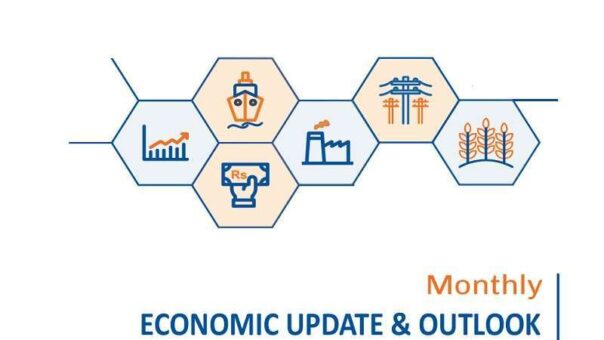Islamabad, May 29, 2025 – The finance ministry of Pakistan has projected a potential increase in inflation in the coming months, despite notable economic gains and macroeconomic stabilization. In its Monthly Economic Outlook for May 2025, released on Thursday, the ministry highlighted that while inflation remained subdued during recent months, rising domestic demand could push prices upward by June.
According to the report, inflation is estimated to remain within the range of 1.5% to 2.0% for May. However, projections suggest that by June 2025, it may rise to between 3.0% and 4.0%, driven by seasonal consumption trends and a recovery in demand-side activity.
The outlook acknowledges that Pakistan’s economy is on a path of gradual recovery. Large Scale Manufacturing (LSM), although still showing a year-on-year (YoY) contraction, is expected to improve modestly, supported by enhanced raw material imports, increased automobile production, and a more accommodative monetary policy. These factors could boost supply-side capacity, yet simultaneously contribute to demand-driven inflation.
Improved climatic conditions and greater water availability have also supported agriculture. During the 2024–25 Rabi season, Pakistan cultivated 22.07 million acres of wheat, with an estimated output of nearly 29 million tonnes. Farm input utilization has increased significantly, boosted by better access to quality seeds, fertilizers, and government-supported credit schemes. Imports of agricultural machinery also rose by 10%, reflecting a broader trend of mechanization.
From a fiscal perspective, the Ministry reported improved revenue performance, with total revenues climbing 36.7% year-on-year during July–March FY2025. Much of this growth came from non-tax sources, such as SBP profits and petroleum levies. The fiscal deficit has narrowed to 2.6% of GDP, while the primary surplus reached 3.0%—evidence of strengthened financial discipline.
Moreover, Pakistan’s external accounts showed strong performance, with a current account surplus of $1.9 billion during the July–April period, reversing a deficit from the previous year. Exports rose by 6.8%, while remittances surged 30.9% to $31.2 billion. Fitch Ratings recently upgraded Pakistan’s economic outlook, acknowledging these positive trends and lower inflation levels as key stabilization indicators.
The monetary policy has also adjusted to support growth. In May, the State Bank of Pakistan (SBP) reduced the policy rate by 100 basis points to 11%, aligning with a significant drop in the Consumer Price Index (CPI) inflation, which fell to a record low of 0.3% YoY in April 2025.
However, authorities have urged caution. While short-term inflation is currently under control, demand-side pressures, global commodity volatility, and supply chain adjustments could contribute to rising inflation in the medium term. Still, the SBP is expected to manage these pressures effectively through careful monetary interventions.
As Pakistan navigates the final quarter of the fiscal year, its economic indicators reflect cautious optimism. While inflation may rise slightly, it remains manageable within the broader context of Pakistan’s fiscal and monetary reforms, which continue to steer the country toward sustained recovery and macroeconomic stability.
